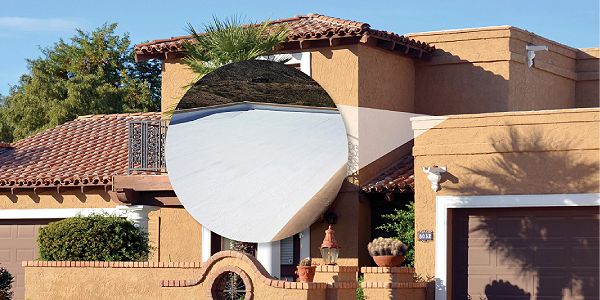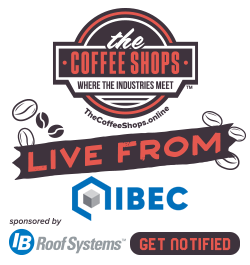The Roofing Industry Will Continue to be Innovated by Climate Change

By Cass Jacoby, RCS Reporter.
The most successful companies will be the ones working to install roofs that offer the most energy-saving potential, sustainable roofing materials, and the smallest environmental impact.
Regardless of your opinion on climate change, the effects of global warming (severe weather, rising sea levels and wildfires) affect the product development in the roofing industry. After all, roofs are the first line of protection we have against destructive weather and natural disaster. Read on to discover how you can best adapt and innovate your roofing practice to account for severe weather.
UV-resistant roofs will be cool no matter what
Regardless of if temperatures continue to rise in the foreseeable future, roofing methods and materials will continue to deliver better ways to insulate homes from UV radiation. Roofs get hot enough at current temperatures, but with reflective and radiative materials and processes, heat gain can be reduced. Materials, such as modified bitumen membranes and elastometric coatings used in roofing installations, like those made by Polyglass effectively reflect the sun’s rays away from homes or buildings. This makes homes and buildings much more energy efficient, because they will be cooler in hot temperatures without blasting the AC. There is a significant demand for products that make roofs cooler.
Catch wind of extremely durable severe weather products
With climate change comes the high probability that there will be a higher frequency of tornados. Luckily, the roofing industry has already innovated and improved asphaltic primers, sealants and cement. Companies like GAF make adhesive products that can keep shingles in place even in hurricane-force winds.
Study up on cutting-edge technology that addresses weather changes
Knowing environmental products and trends in the weather is to be at the cutting edge of the roofing industry. Being knowledgeable about seasonal extremes and relaying these to your customers will help you make better suggestions for products that can address specific reoccurring severe conditions. iRoofing suggests finding information through NOAA, the National Oceanic & Atmospheric Administration’s blog about climate trends.
Additionally, knowing everything you can about new products and techniques allows you to offer products and preventative measures for any new roof installation. Property owners appreciate and want to hire a prepared and knowledgeable expert, so being up to date with the latest technology developed for severe weather is of benefit to everyone.
Adopt eco-friendly tools
Environmentally conscious roof measurement and estimating software is not just eco-friendly, it also saves time and impresses homeowners. Measuring a roof remotely significantly reduces your company’s carbon footprint, while also meaning fewer trips to the job site because assessing a roof takes less time. This technology comes with appealing features like pitch detector tool, roof color and roof material simulation, plus many other capabilities needed to thoroughly assess a roofing project for a home or building before you ever meet face-to-face with the property owner or visit the project address.
Gradual changes will continue to happen in our climate and the roofing industry will continue to grow and prosper. As a roofing contractor, you don’t only have a role to play in replacing roofs from people impacted by severe weather, but you have a duty to help prevent damage by promoting the best products and practices for roof installations.
Stay up to date with the latest roofing industry news when you sign up for the RCS Week in Roofing e-news.





-2025-xtv-mls-tour-2.png)

















Comments
Leave a Reply
Have an account? Login to leave a comment!
Sign In